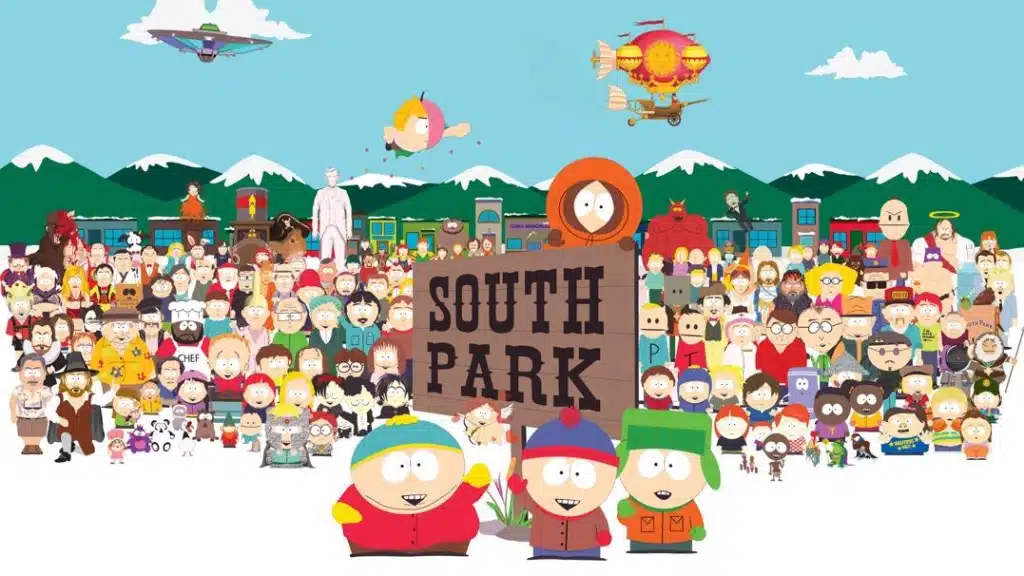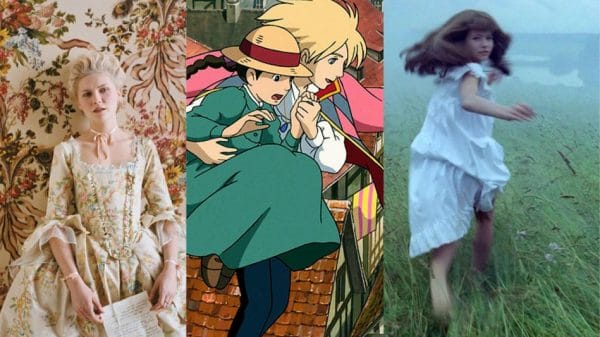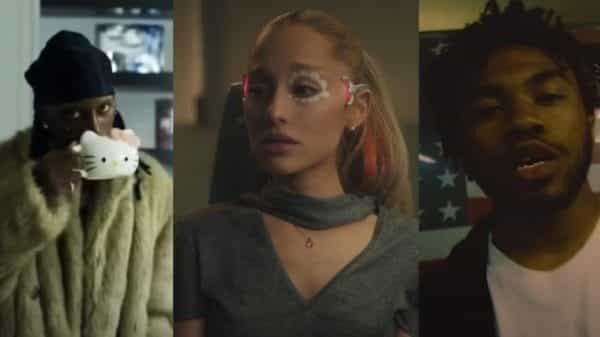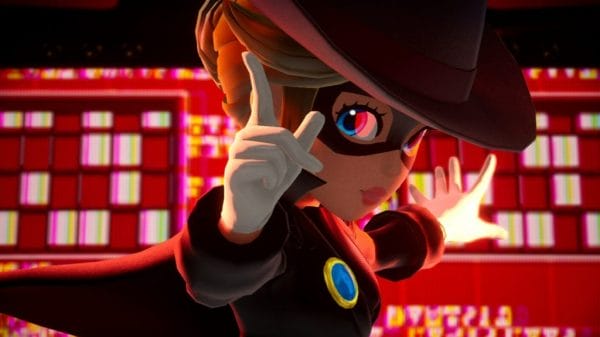Ever since 1997, South Park has delighted, shocked, and disgusted fans with its iconic irreverent, and often tasteless, sense of humor. Matt Stone and Trey Parker, who based the show on their own upbringing in the small-town Colorado suburbs, built an empire on four precocious boys made of construction paper. South Park has seen many changes in its 25, nearly 26, years on the air. And it would seem Matt and Trey are not happy about the show’s current direction.
South Park is no stranger to double meanings, analogies, and metaphors. Much of the show’s humor is based on socio-political commentary draped in a thin veneer of exaggeration and allegory, whether using Manbearpig as a metaphor for climate change or trapping Tom Cruise in a closet to comment on his sexuality.
South Park is also famous for reinventing itself every so often. The show introduced to us in 1997 is now very different from the front of 2023. In this article, we will chart the various evolutions of the show and discuss the comments made in this most recent season that point toward Matt and Trey being less than enthused with its direction.
1997-2000: The Innocence Years
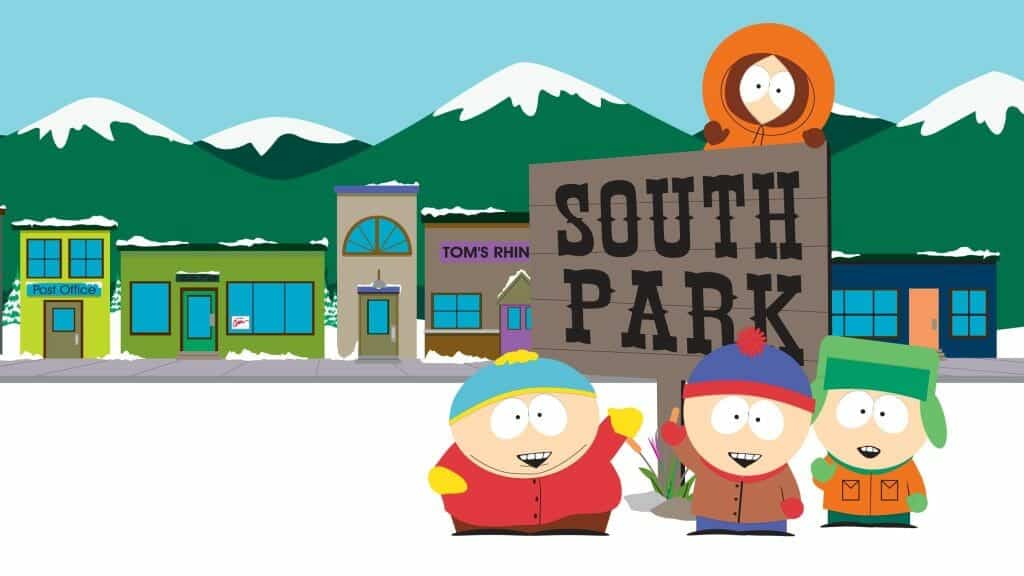
Image Courtesy of Comedy Central and Paramount
The earliest seasons of South Park are perhaps the most unique. Modern show fans will immediately notice the lack of focus on political commentary and the more simplistic characterization of the leading four boys. Eric, Stan, Kenny, and Kyle were portrayed as simple 3rd graders in a suburban setting. More often than not blissfully ignorant of the world around them and largely innocent (except for Eric). These early episodes focused more on situational comedy and sight gags rather than complex multi-layered humor.
South Park spent its early years filling up the second slot in the big three animated sitcoms and, as such, had its role to play. The Simpsons began life as your ordinary family sitcom placed in a cartoon world with cartoon rules. It used its format to dissect the nuclear family in (then) modern America. Family Guy similarly aligned itself with the classic American sitcom but used its setup to criticize the often fantasized reality sitcoms from the 70s and 80s portrayed. Seth MacFarlane created Peter Griffin as a parody of Archie Bunker and a commentary on the terrible parenting advice old sitcoms would give. Seth filled the early seasons of Family Guy with references to classic sitcoms because that was where the show’s concept and style were adopted and its commentary once laid.
South Park chose to move in a different direction. Matt and Trey took the Simpson’s DNA, all the cartoon sitcoms of the era had, and mixed in a heavy helping of Beavis and Butthead to create a show meant to highlight the often overlooked middle-American lifestyle. American media has always been coast-focused, with allegiances to either New York or Los Angeles on both extremes of the US. Chicago is the only part of middle America to receive significant media representation. South Park is a dissection of the facade of idyllic rural and suburban America. If Family Guy’s target was All in the Family, South Park had its eyes on The Andy Griffith Show.
2001-2013: The Golden Era
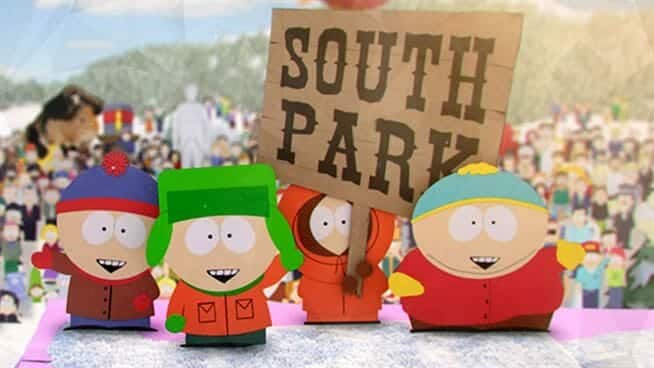
Image Courtesy of Comedy Central and Paramount
Finding the best creative streak in any show is going to be controversial. Different viewers find enjoyment in other parts of a show. However, you will have great difficulty finding fans of South Park who would disagree with the statement “The 2000s were the best era of South Park.”
After the South Park movie came out in 1999, it invigorated a fire in Matt and Trey. They fell in love with the political commentary they could make with their hick town of characters. The show quickly evolved to include socio-political commentary. Matt and Trey have never explicitly stated their political affiliations. However, they have always tried to keep South Park the moderate voice of reason in an increasingly partisan country.
South Park usually creates commentary in 1 of 2 ways. They either A) develop an allegory or metaphor that they can then use to look and mock a subject objectively or B) take the political concept to its absolute logical extreme until both sides look stupid. The goal of Matt and Trey is to force us to look at a political subject from an outside perspective and assess it from a purely objective value system.
In doing so, the four boys who were once characterized as sheltered kids from a somewhat rural suburban area are instead described as precocious voices of reason in an otherwise absurd world. Stan and Kyle quickly became quite lengthy and moral characters. Meanwhile Eric Cartman graduated from being a selfish, jealous character whose terrible actions usually originated from his childish ignorance to a sociopath whose selfish and jealous actions are fueled by a dangerous narcissistic disregard for outside perspectives. In the earlier seasons, Cartman’s ignorance was implicit and caused by a sheltered and pampered upbringing by his mother. Cartman’s ignorance is explicit and fueled by narcissism and laziness in later seasons.
This era saw Matt and Trey lockdown on the formula that would push South Park forward for over a decade. Many of the most popular and most quoted episodes of South Park come from this era of the show. “Manbearpig,” “Make Love, not Warcraft,” “Woodland Critter Christmas,” and ‘The Losing Edge” (more on that later) all come from this era. This is easily the most recognizable format the show has ever had.
However, in the background, change began brewing during this era. It would take years, but eventually, the show would have a massive shift.
2005-2016: The Rise of Randy
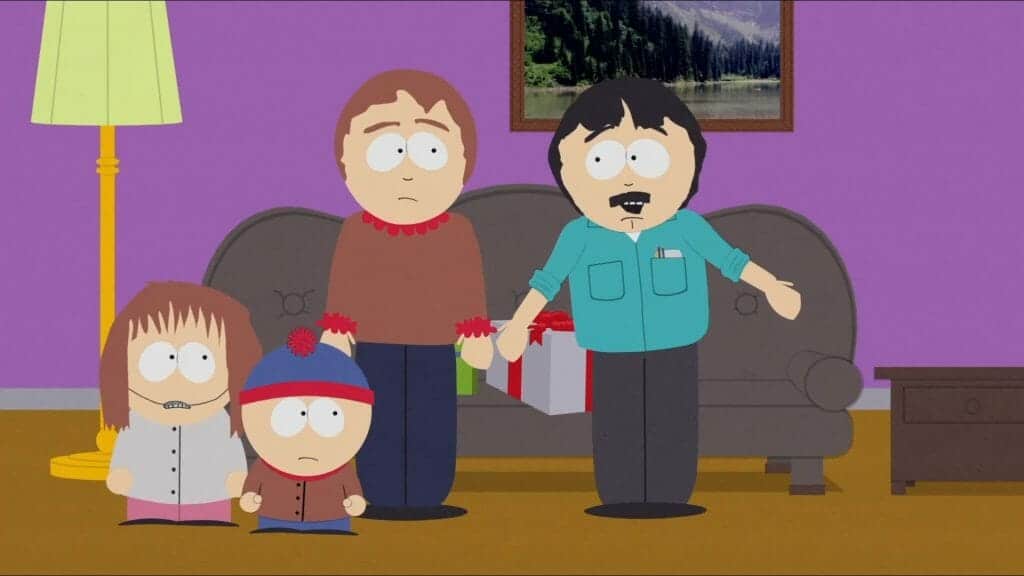
Image Courtesy of Comedy Central and Paramount
Randy Marsh, the father of the main character Stan Marsh, began as a simple background character in the earlier seasons. He was having minor roles in episodes like “Two Guys Naked in a Hot Tub” and “Spontaneous Combustion”. However, starting in the episode “The Losing Edge”, Matt and Trey began slowly characterizing Randy more and more. Increasing his screen time and regularly giving him starring roles in episodes. Alongside Mr. Garrison and Sheila Brovlofski, Randy became one of only a handful of developed adult characters on the show. And like Mr. Garrison, Randy had the rare honor of having entire episodes about him. Episodes like “Bloody Marry,” “More Crap,” “Over Logging,” and “Creme Fraiche” all saw Randy being the primary or secondary lead.
It became obvious that Matt and Trey loved Randy as a character and wanted to use him more.
2014-2019: Serialization

Image Courtesy of Comedy Central and Paramount
South Park had managed 17 seasons as a largely episodic show. This is a feat to behold. While episodic television is often dunked on for its easily digestible nature and low-stakes narratives, the truth is that writing in a serial format is extremely hard behind the scenes. Especially when you have been doing it for nearly 20 years. Building a story that is interesting and satisfying build, climax, and conclusion that fits into only 21 minutes, once a week, for 10-20 weeks a year, every year, is exhausting.
It was only time before Matt and Trey grew tired of writing like this and wanted to try something different. The serialization of South Park was incredibly controversial. The serialization Began small in season 18 with the Lorde side plot. However, Matt and Trey would plunge into the deep end in the following season. Season 19 saw the PC and Sponsored Content primary plot take up most episodes.

Image Courtesy of Comedy Central and Paramount
The pacing is the biggest challenge to taking an episodic series and adapting it to a serialized format. Episodic television doesn’t have the luxury of sitting around. They have to tell the entire story they have been given in a single episode run-time. Serialized television has an entire season to tell its story and can slow its pacing down. That shift in pacing can be whiplashing. It can be challenging for viewers to adjust, and many shows that change can feel like they are crawling around because we are so used to the fast pace it used to have.
The fanbase met the serialization of South Park with backlash. However, Matt and Trey seemed quite pleased with the change in creative progress. Seasons 20 and 21 would continue this practice with the Troll Trace and President Garrison storylines.
2018-2021: Tegridy Farms and the Randy Revolution

2018 would see the most significant shift yet to the formula. Most importantly, the boys took a heavy backseat as Randy became the new main character. Moving outside of South Park and setting up a weed farm. This era of the show is easily the most controversial and saw Matt and Trey at odds with the fanbase. The duo doubled down on their creative direction at every opportunity while even acknowledging the fandom’s discontent.
The episode ending aptly titled “Season Finale” sees Randy hang up his hat for the ‘season.’ A double meaning refers to the show’s season and the in-universe harvest, remarking that it was probably better than the fans expected. Despite the fans’ dissatisfaction about the growing preference toward the Tegridy Farms storyline, Matt and Trey loved writing for it. After over 20 years, it seems the duo had grown tired of the four boys they invented in college. They desperately wanted to branch onto something new. Serialization appeared to provide relief from the one-week writing cycle that Matt and Trey had been performing since season 4. And Randy and Tegridy Farms likely gave them a change in voice and scenery that freed them from the confines of South Park, where they felt trapped after 20 years.
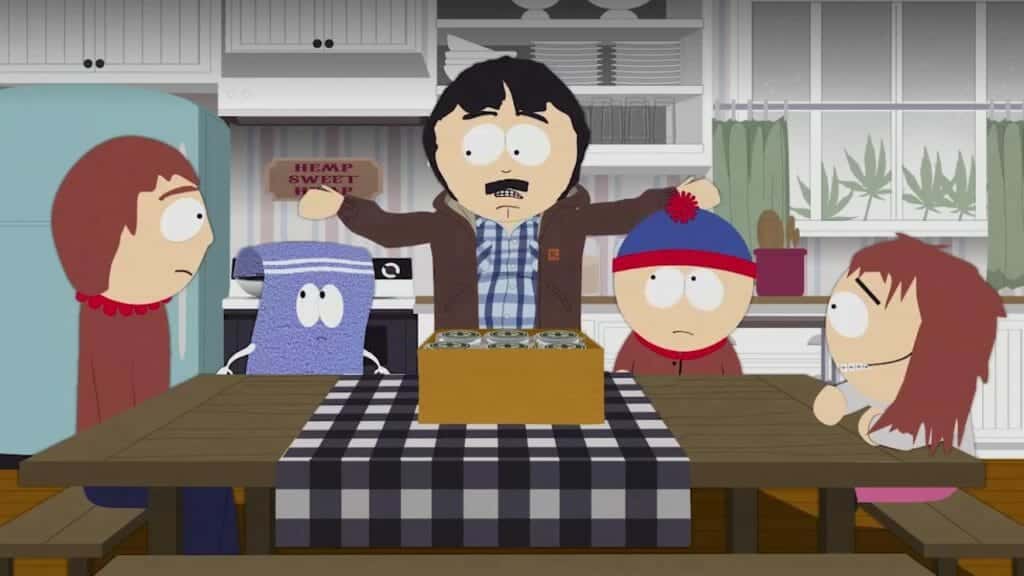
Randy’s primary character status would continue through the Pandemic Special in 2020. However, in the “South ParQ: Vaccination Special,” we would see a return to the prominence of the original four boys.
2021- Post Covide and the Return of the Status Quo
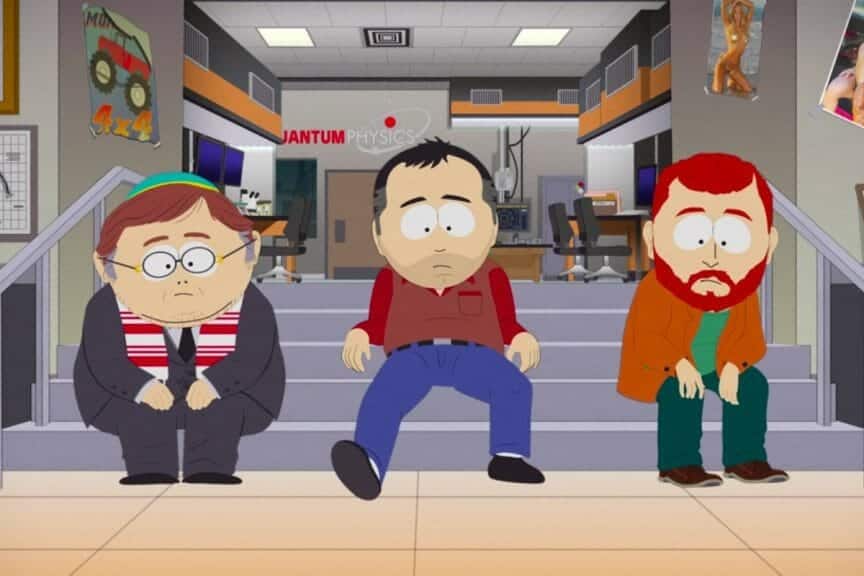
Image Courtesy of Comedy Central and Paramount
Tides would turn with the Post Covid two-part special. Suddenly, the four boys are at the forefront of the story, and Randy is hard to be seen. 2021 and 2022 saw the return of the South Park we used to know. 2022 and season 25 went back to formula. Randy was reduced to a minor role as the citizens of South Park, and the four boys became the show’s primary focus once more.
Although only six episodes long, Matt and Trey made up for it with another two-part special, “The Streaming Wars,” which saw Randy bumped up to a secondary lead; however, he kept the four boys in as the primary. Matt and Trey tried to find a new balance between old and new. To give the fans what they want without giving up what they had built with Tegridy.
Matt and Trey Bite Back
Season 26 premiered earlier this year and wrapped up with another batch of half a dozen episodes. However, multiple episodes point to a somewhat bitter attitude held by Matt and Trey toward this particular season and the return of the old format.
There is only so much Matt and Trey can say in only six episodes. Multiple episodes seem to point toward their dissatisfaction with the current creative direction. Given the duo’s history would double-entendre and metaphor, it is not outside the scope of possibility that these messages are pointing toward hatred for the show in its current state.
Randy and his Toilet Troubles
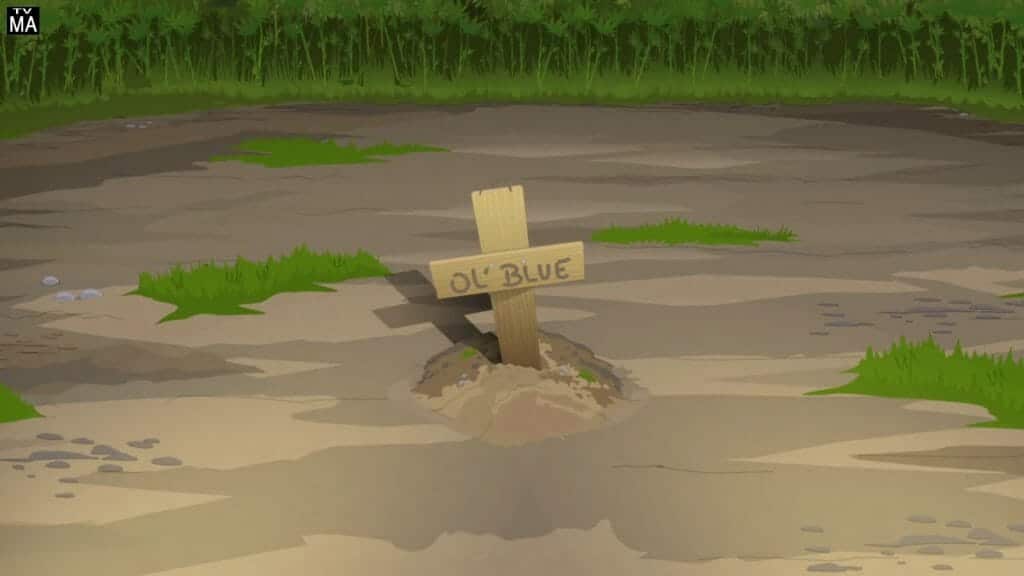
Image Courtesy of Comedy Central and Paramount
Episode 3 of the new season seems to be a real shot at the series’ direction and Matt and Trey’s impending burnout. The episode opens with Randy’s wife, Sharon, accidentally clogging their aging toilet. Sharon gives Randy a request to replace the toilet. When Randy buys a brand-new high-tech Japanese bathroom, he begins bragging about it to the South Park community. This eventually snowballs until he declares war on toilet paper, claiming everyone should start using a bidet.
Randy suddenly ended his war against TP when the, presumably, toilet paper companies attempted his life. Jaded and licking his wounds, Randy digs up the old toilet, which he buried with a grave marker. He placed the dirty, beaten, and tattered old thing back into his bathroom, which stands out as a dirty, outdated outlier in the otherwise clean and well-kept bathroom.

Image Courtesy of Comedy Central and Paramount
This seems like a direct attack on the direction of the show. The Japanese toilet was meant to refer to something new and an evolution from what came before. A metaphor for change within the show both creators felt was necessary. But instead, much like the old blue toilet, Matt and Trey have been forced to dredge up the old format the show had used for nearly 20 years.
Doubling Down and Cartman Comes Home
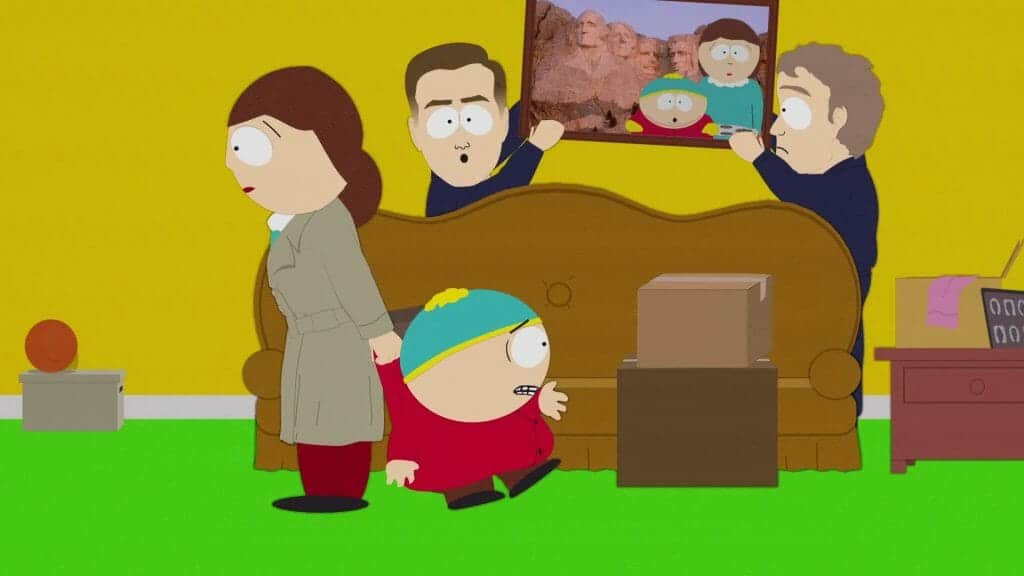
Image Courtesy of Comedy Central and Paramount
Episode 5, “DikinBaus Hot Dogs,” revolves around Cartman and Kenny turning Eric’s current residence, an abandoned Weinerschnitzel stand, back into a food service business. Backed by money from the famous character Butter, The two boys squander Butter’s money to turn the air into a makeshift playground for their enjoyment. When Butters and Cartman’s mom, Liane, manages to turn the business into something profitable, they sell the company and the stand to outside investors, and Liane repurchases their old house.
Liane then drags Cartman back into his old place of residence. Furious that she is taking the place he helped build away from him. Cartman’s rejection of returning to the status quo resembles Matt and Trey’s feelings towards the show. Cartman had spent time and energy to turn his new place into somewhere he could enjoy himself, and in one fell swoop, he lost it and had to return to what he had before.
I don’t want my old house I want DikinBaus!
Eric Cartman
What Does it Mean?
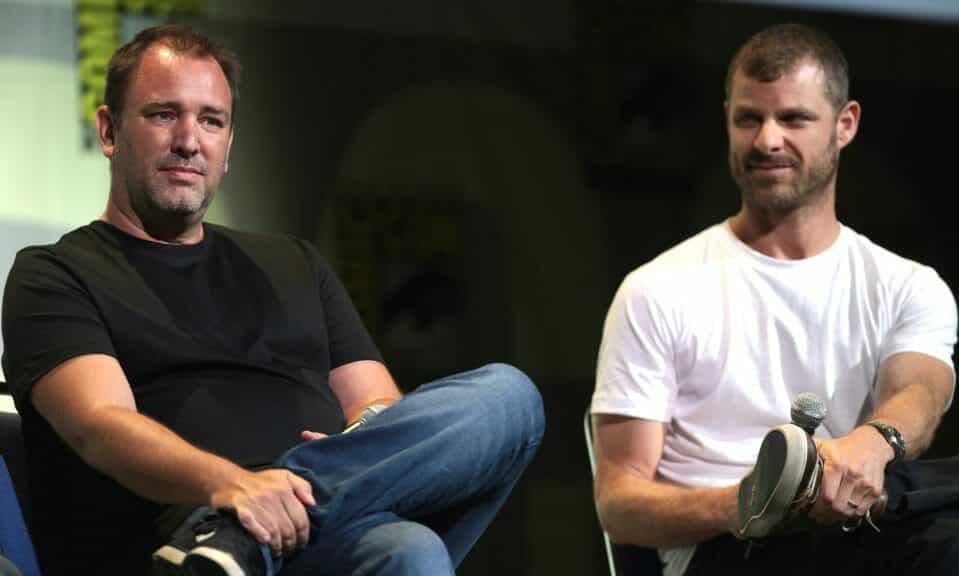
Image Courtesy of Gage Skidmore
Both episodes three and five ended on fairly straightforward analogies to their dissatisfaction with returning to the old format. Matt and Trey spent years trying to change South Park into something new. The serialization and focus on Tegridy Farms were all to create something new and exciting for Matt, Trey, and the other South Park writers who grew bored with the same old schtick.
Episode Three paints the most precise image. Randy came so close to convincing the people of South Park that his new way of life was correct. However, his efforts were squandered by a small but influential group of money-hungry people who instead shot him down.
What is most interesting is who this labels as the villains. Rather than point and blame the fans who have been somewhat critical of the Tegridy Farms era of the show, it would seem Matt and Trey point their fingers at corporate executives. If Matt and Trey continue to change the show, the people who have their money are directly on the line.

Image Courtesy of Comedy Central and Paramount
In their eyes, Matt and Trey both believed that the fans were on the verge of clicking with Tegridy Farms and that it was only a matter of time until viewers of the show finally fell in love with the new format. But Comedy Central, Paramount, or parent company Viacom and its executives felt it necessary to push both creators to shift back to the old formula.
After nearly eight seasons of experimentation, Matt and Trey are right back where they started. Creating weekly episodic stories about four young boys getting into trouble in South Park. For them, this must feel like defeat. Everything Matt and Trey have tried to build with Randy, President Garrison, and Tegridy Farms has been reduced to references and sight gags.
South Park now lies in the corpse of a failed experiment; its carcass and guts and giblets lie around, clear to see. Its ghostly vapors cling over the town of South Park like a choking fog. Matt and Trey went to great lengths to shift South Park into something new and, in that process, significantly changed the show’s makeup and DNA. So much so that when going back to the old formula, you can’t help but feel weird watching as Stan, Kyle, Kenny, and Cartman prance around like it is 2010 again, but within this version of South Park so deeply morphed by the last several years.
What this means for the future of South Park is still unknown. South Park shows no signs of going away (So long as it wins its lawsuit). If we put on our speculation hats, it would be best to assume that the comedic duo will continue trying to find a balance between old and new that would satisfy them, the execs, and the fans.
For more South Park content, check out this article here.


